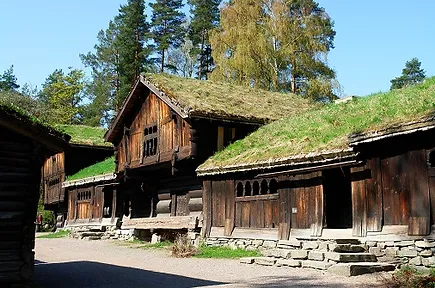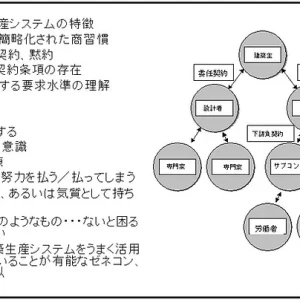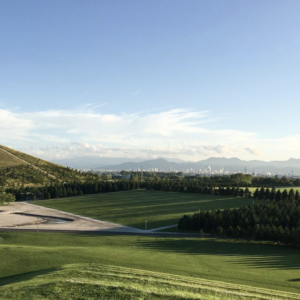
Beam-pillar and blockhouse wooden construction systems in the world: the areas of domination and mixing zones|Galyna SHEVTSOVA
Annotation:
At the early time in every world region the both blockhouse and beam-pillar systems of wooden architecture were used.Further the advantage obtained this type that answered better to the local climate and seismic circumstances. There are the global world areas of blockhouse and beam-pillar systems being spread according to climate and seismic wind vibration criteria: the beam-pillar system suits for regions with hot climate and high vibrations, and the blockhouse system is common for the regions with cold climate and low vibrations. There exist also some zones with mixed and hybridized constructions that appear in the borders of global areas and also in the territories with abnormal climate-seismic factors local dissemination where the criteria suitable for the blockhouse and beam-pillar systems came into contradiction. Here due to mixing and hybridization of wooden building systems the most original wooden architecture usually appears.
Key words:
wooden architecture, blockhouse, beam-pillar,climate-seismic criteria, global areas of wooden systems spreading, abnormal climatic dissemination territories, contradictive criteria, mixing and hybridizing of wooden building systems.
The problem of the global developing processes of blockhouse and beam-pillar constructive systems of wooden architecture is quite unstudied. For the first glance it seems that at each geographic region of the word reigns either blockhouse or beam-pillar system. Marking the territories of blockhouse and beam-pillar spreading on the Eurasian map we can notice that there exist the global areas of blockhouse and beam-pillar systems spreading [1]. It is also can be noticed that beam-pillar system is mostly common for the south-east regions (such as South-East Asia and Far East regions) and the blockhouse system is eventually common for north-west regions (such as Norse Europe,(pic. 1). So it seems logic to suppose that cold-resistant solid blockhouse system was shaped at the North and lighter beam-pillar system origins from South. But due to the comparative study of some ancient clay models and archeological vestiges of wooden architecture coming from different territories excavations we could find that there at early times the both blockhouse and beam-pillar systems were used. Thus we could find some information of the both constructive systems existence at the early times of South-East and Central Asia, Caucasus, Mediterranean,Slavic regions, Northern Europe and so [2-14 and so]. So it is possible to suppose that initially the both systems were developed almost everywhere in the world and finally in certain region the advantage obtained that type of the wooden construction that answered better to the local circumstances.
So, what type of local circumstances could influence in certain region to the process of constructive system choice? It is obviously consists not only of the topic of existence or absence of the wood. It seems naturally that blockhouse that needs a lot of wood could dominate at forest lands and at the forest deficit lands it is better to use economic beam-pillar system. But there are a lot of examples of high forest countries (such as Japan as well) nevertheless using mainly beam-pillar system. The logical analytic of this point leads us to the decision that the basic criteria of blockhouse or beam-pillar system choice in certain geographic territory mostly source from the character of local climate and seismic-wind vibration circumstances than from the quantity of the forests. Simply speaking, each constructive system of wooden architecture has basic technical characteristics suitable or unsuitable for certain climatic factors.
Generally it is possible to point several objective criteria that leads to beam-pillar or blockhouse system domination at the certain rejoin.

Pic. 1 World areas of blockhouse and beam-pillar constructive systems.
Beam-pillar domination criteria are:
Wet and warm climate that suits to such technical peculiarity of beam-pillar system as easiness of buildings inner space’s ventilation. From the other hand, in the warm climate does not matter the beam-pillar system low coldresistant ability;
High seismic activity or strong winds as beam-pillar construction is quite strong to the vibrations and is able to shape enforced vibration-resistant variations (as for example the famous “nuki” system of Japanese historical architecture). At the same time, in the case of destroying, the beam-pillar system provides minimum danger and is easy to repair.
Blockhouse domination criteria are:
Dry and cold climate that suits to the high cold-resistant peculiarity of the blockhouse construction. In the same time, in cold climate does not matter its low ventilation ability; Absence of seismic activity or strong winds that makes not important the low resistant ability to the vibrations of blockhouse joints.
So now we could clearly understand why in some geographic regions finally came to domination one or another wooden architecture constructive system: beam-pillar or blockhouse. Precisely speaking, although beam-pillar system can be easily aerated and is strong to the vibrations, it fits to the hot, seismic and windy regions (exactly like South-East Asia and Far East regions). From the other hand, blockhouse is cold resistant but has bad aeration ability and is quite weak to the vibrations, so it is more suitable to the regions with cold but not windy climate with no earthquakes (exactly like Norse Europe). In the same time, we have to mean that in every case the final choice of the constructive system was influenced not only by single certain reason but mostly by their complex. It is also the fact that in most cases “failed” constructive system continued to be used in rudimental forms for some types of wooden buildings having unique function or requiring special maintenance [1]. Let us analyze the details of such proses on the examples of Ukraine and Japan.
Although initially in the territory of Ukraine were tried the both blockhouse and beam-pillar systems [9-10], finally the blockhouse has dominated at the most part of Ukrainian territory(1) as it can be brightly seen at the examples of Ukrainian entire blockhouse rural houses and fascinated wooden churches (pic. 2) [15-17]. This domination is evidentially caused by quite cold Ukrainian climate with absence of strong winds and earthquakes. But in Ukrainian case this domination is quite resent and not absolute. A lot of archeological vestiges whiteness for about the wide variation of beam-pillar constructions at territories of Ukraine at the time of Bronze as well in the Ancient- Russ period (9th-14th cc.) [11-13]. Nowadays we also can see some part of beam-pillar constructions among the household outbuildings and support structures of Ukrainian rural architecture [18-20] (pic. 3). The beam-pillar structure also is fully or partly used for Ukrainian belfries [21; 22] (pic. 3). All these cases can be explained by some special function of mentioned buildings that for example not need to be heated inside in winter like some types of rural storehouses or requires special construction like belfries. In the case of belfries it is possible to assume that the choice of untypical for Ukraine beam-pillar system is connected here with the peculiarities of this building’s function. As a belfry is not supposed for the long people stay, the cold-resistant ability is not needed here, so most economical beam-pillar construction is preferable. In the same time the belfry is usually feeling quite strong vibration caused with bell oscillation as well as by swinging efforts of the ringer so in this case the preference of beam-pillar construction becomes evident.

Rural house of Polissya historical land

Church from Kisorychi village

Church from Sinyavka village

Church from Bronniki village

Church from Novomoskovsk town

Chapel from Klesiv village
Pic. 2 Ukrainian entire blockhouse rural houses, chapels and churches (17-19th c.).

Belfry from Yasynya village

Belfry from Kut-Tovste village

Belfry from Krainikovo village
Pic. 3 Ukrainian beam-pillar and mixed constructions (17-19th c.).
In Japan we can observe reverse phenomena: there finally beam-pillar system has dominated but the rudiments of blockhouse system still can be seen in the household outbuildings and support structures. We also can find the witness of wider blockhouse system spreading there in old times, for example, in the takayuka type granaries of Sannay Maruyama archeological cite excavations and so. But of course in the wet and warm Japanese climate with often earthquakes and typhoons the blockhouse construction is not suitable for the wide using. It is also true that blockhouse system is not convenient for the creation of the buildings with spacious layout [24]. That fact maybe also limited its spreading in Japan at Asuka-Nara times. Of course it is evident that limited with trunk length and unstable in lateral dimension blockhouse is not allow to create so usual for Far East architecture buildings with spacious layout. So it is possible to suppose that partly borrowed from China and Korea, architectural taste of Japan finally leaded to beam-pillar domination of this area(2). But the same it can be supposed that much earlier, generally suitable for Far East climate beam-pillar system dictated the initially shape preference of Far East architecture(3). Nevertheless, as it was mentioned before, in Japan also, the “failed” blockhouse system continued its rudimental existence in some types of additional buildings. The main medium of blockhouse in Japan are storehouse buildings eventually having source from Jomon and Yayoi époques takayuka type granaries and then transformed to a state treasury storehouses and ceremonial regalia storages having their blossoming mostly in 5th-6th cc. [24].
Basing of the excavation materials from Sannay Maruyama archeological sites it can be supposed that in late Jomon period – the time of takayuka granaries formation, they could be beam-pillar or blockhouse system as well. But starting from Yayoi period these two systems became to mix and finally elaborated so called ita-azekura hybrid system that gave a little more shaping freedom to the builders and probably was stronger to the vibrations than blockhouse. Good examples of such granaries now can be seen at Toro archeological site excavations. It is also can be noticed some ita-azekura system influence to early Shinto architecture, mainly in Ise-jingu construction [24]. At Asuka and early Nara times due to political and economic reasons the big state storehouse building type arose. In seems that in 5th-6th cc. in Japan old fashioned ita-azekura storehouses existed synchronically with modern beam-pillar constructions inspired by Korean carpenters [24]. But nevertheless blockhouse survived till nowadays mostly in temple storehouses for ceremonial regalia.







